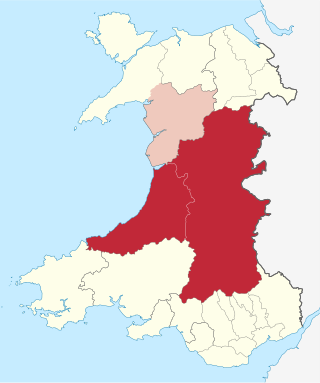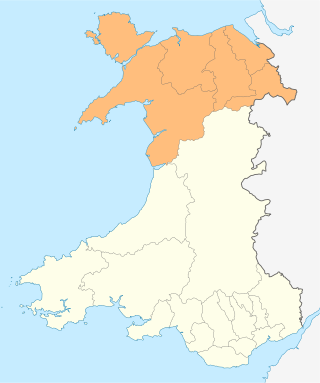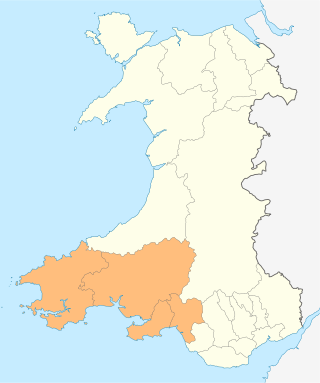Local government in Wales is primarily undertaken by the twenty-two principal councils. The councils are unitary authorities, meaning they are responsible for providing local government services within their principal area, including education, social work, environmental protection, and most highway maintenance. The principal areas are divided into communities, most of which have an elected community council. The services provided by community councils vary, but they will typically maintain public spaces and facilities. Local councils in Wales are elected; the most recent local elections in Wales took place in 2022, and the next are due to take place in 2027.

The regional chambers of England were a group of indirectly elected regional bodies that were created by the provisions of the Regional Development Agencies Act 1998. There were eight regional chambers, one for each of the regions of England except Greater London, which had opted for an elected mayor and assembly in 1998. All eight regional chambers had adopted the title "regional assembly" or "assembly" as part of their name, though this was not an official status in law. The chambers were abolished over a two-year period between 31 March 2008 and 31 March 2010 and some of their functions were assumed by newly established local authority leaders' boards.

North Wales is a region of Wales, encompassing its northernmost areas. It borders mid Wales to the south, England to the east, and the Irish Sea to the north and west. The area is highly mountainous and rural, with Snowdonia National Park and the Clwydian Range and Dee Valley, known for its mountains, waterfalls and trails, wholly within the region. Its population is concentrated in the north-east and northern coastal areas, with significant Welsh-speaking populations in its western and rural areas. North Wales is imprecisely defined, lacking any exact definition or administrative structure. It is commonly defined administratively as its six most northern principal areas, but other definitions exist, with Montgomeryshire historically considered to be part of the region.

Mid Wales, or Central Wales, is a region of Wales, encompassing its midlands, in-between North Wales and South Wales. The Mid Wales Regional Committee of the Senedd covered the unitary authority areas of Ceredigion and Powys and the area of Gwynedd that had previously been the district of Meirionnydd. A similar definition is used by the BBC. The Wales Spatial Plan defines a region known as "Central Wales" which covers Ceredigion and Powys.

The Government of Singapore consists of several departments, known as ministries and statutory boards in Singapore. Ministries are led by a member of the Cabinet and deal with state matters that require direct political oversight. The member of the Cabinet heading the ministry is known as the minister, who is supported by a junior minister known as minister of state in Singapore. The administrative management of the ministry is led by a senior civil servant known as permanent secretary.

South West Wales is one of the regions of Wales comprising the unitary authorities of Swansea, Neath Port Talbot, Carmarthenshire and Pembrokeshire.
The subdivisions of Wales constitute a hierarchy of administrative divisions and non-administrative ceremonial areas.

The Mid and West Wales Fire and Rescue Service is the fire and rescue service covering the Welsh principal areas of Carmarthenshire, Ceredigion, Neath Port Talbot, Pembrokeshire, Powys and Swansea.
The Taith Joint Board is a legally constituted joint committee of the six north Wales county authorities for the purpose of developing and implementing actions and strategies for transport in north Wales. It was formally established on 31 March 2004. Prior to that date it was an informal consortium of the six north Wales counties. Taith had originally been the Transport Sub-Committee of the North Wales Economic Forum and adopted the "Taith" name and style in 2002. Although Gwynedd is a member of Taith, the former Meirionnydd district of Gwynedd is included in the mid Wales "TraCC" transport consortium which covers Powys and Ceredigion also. The boundaries of the transport consortiums in Wales were formalised by "The Regional Transport Planning (Wales) Order" of the National Assembly for Wales in 2006. Apart from Taith and TraCC there are two other transport consortiums in Wales - SEWTA and SWWITCH

South East Wales is a loosely defined region of Wales generally corresponding to the preserved counties of Mid Glamorgan, South Glamorgan and Gwent. Highly urbanised, it includes the cities of Cardiff and Newport as well as large towns in the South Wales Valleys.

The regions of England, formerly known as the government office regions, are the highest tier of sub-national division in England. They were established in 1994 and follow the 1974–96 county borders. They are a continuation of the former 1940s standard regions which followed the 1889–1974 administrative county borders. Between 1994 and 2011, all nine regions had partly devolved functions; they no longer fulfil this role, continuing to be used for limited statistical purposes.

A combined authority (CA) is a type of local government institution introduced in England outside Greater London by the Local Democracy, Economic Development and Construction Act 2009. CAs are created voluntarily and allow a group of local authorities to pool appropriate responsibility and receive certain devolved functions from central government in order to deliver transport and economic policy more effectively over a wider area. In areas where local government is two-tier, both must participate in the combined authority.

The West Yorkshire Combined Authority (WYCA) is the combined authority for West Yorkshire in England. It was established by statutory instrument under the Local Democracy, Economic Development and Construction Act 2009 on 1 April 2014. It is a strategic authority with powers over transport, economic development and regeneration. The metro-mayor of the authority is Tracy Brabin.

Wales has traditionally been divided into a number of ambiguous and ill-defined areas described as regions, reflecting historical, geographical, administrative, cultural and electoral boundaries within the country. Presently, the most common form of division of Wales into "regions" has been using cardinal and intercardinal references: north or south-west for example. None of the variously described "regions" have official status or defined boundaries; neither is there a fixed number of regions. Various organisations use different regions and combinations of regions for their individual purposes. This includes devolved institutions, such as Visit Wales, Natural Resources Wales, and the Welsh Government itself, using different sets of Wales' regions. Wales is most commonly sub-divided into between two and four regions, with a North–South divide, and North, Mid, South East and South West division being common. This article lists the various terms applied to be the "regions of Wales" and the regions used by various organisations.

Ambition North Wales is a joint committee and decision-making body overseeing the North Wales Growth Deal, a regional economic growth deal covering the North Wales region. It is a partnership between the six local authorities of Conwy County Borough, Denbighshire, Flintshire, Gwynedd, Isle of Anglesey, and Wrexham County Borough, and other local partners in the region, including Bangor University, Wrexham University, Grŵp Llandrillo Menai, Coleg Cambria, and various private sector representatives.

Regional economy in Wales is centred on four regional economic boards in Wales. Each board oversees a city or growth deal, signed between 2016 and 2022, lasting 10–15 years. Two of the deals are city deals signed and proposed by their respective economic boards, and their areas are described as "city regions"; the Cardiff Capital Region and Swansea Bay City Region. Whereas in North Wales, the North Wales Economic Ambition Board negotiated a North Wales growth deal signed in 2020, and in Mid Wales, the Growing Mid Wales Partnership, led negotiations for a Mid Wales growth deal signed in 2022. The programmes are based on the City deal and Growth deal initiatives set up by the Coalition UK Government in 2012, to promote the decentralisation of the UK economy, by stimulating local economic growth.

A Corporate Joint Committee is a type of local government institution introduced in Wales by the Local Government and Elections (Wales) Act 2021.

The North Wales Corporate Joint Committee is the Corporate Joint Committee for North Wales that was established in April 2021 by statutory instruments made under the Local Government and Elections (Wales) Act 2021. It is an indirectly elected body made up of leaders of principal councils and national park authorities in the region.

The South West Wales Corporate Joint Committee is the Corporate Joint Committee for South West Wales that was established in April 2021 by statutory instruments made under the Local Government and Elections (Wales) Act 2021. It is an indirectly elected body made up of leaders of principal councils and national park authorities in the region.

The South East Wales Corporate Joint Committee is the Corporate Joint Committee for South East Wales that was established in April 2021 by statutory instruments made under the Local Government and Elections (Wales) Act 2021. It is an indirectly elected body made up of leaders of principal councils and national park authorities in the region.
















